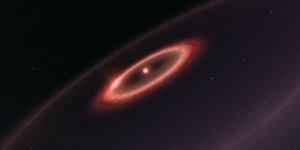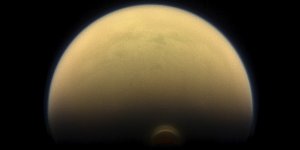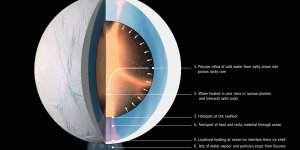| News / Space News |
NASA’s Hubble Looks to the Final Frontier
NASA | JULY 23, 2016
The Hubble image unveils a very cluttered-looking universe filled with galaxies near and far. Some are distorted like a funhouse mirror through a warping-of-space phenomenon first predicted by Einstein a century ago.

This view of a massive cluster of galaxies unveils a very cluttered-looking universe filled with galaxies near and far. Some are distorted like a funhouse mirror through a "space warp" phenomenon first predicted by Einstein a century ago. ![]()
In the center of the image is the immense galaxy cluster Abell S1063, located 4 billion light-years away, and surrounded by magnified images of galaxies much farther.
Thanks to Hubble's exquisite sharpness, the photo unveils the effect of space warping due to gravity. The huge mass of the cluster distorts and magnifies the light from galaxies that lie far behind it due to an effect called gravitational lensing. This phenomenon allows Hubble to see galaxies that would otherwise be too small and faint to observe.
This "warp field" makes it possible to get a peek at the very first generation of galaxies. Already, an infant galaxy has been found in the field, as it looked 1 billion years after the big bang.
This frontier image provides a sneak peak of the early universe, and gives us a taste of what the James Webb Space Telescope will be capable of seeing in greater detail when it launches in 2018.
The cluster contains approximately 100 million-million solar masses, and contains 51 confirmed galaxies and perhaps over 400 more.
Identifying the magnified images of background galaxies within these clusters will help astronomers to improve their models of the distribution of both ordinary and dark matter in the galaxy cluster. This is key to understanding the mysterious nature of dark matter that comprises most of the mass of the universe.
YOU MAY ALSO LIKE





